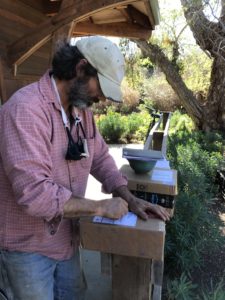

Last week we got a box in the mail with a bright green “LIVE ANIMALS” sticker on the side.
And what was inside this box? Beneficial insects to help us combat aphids! In this box, we had lacewings and Aphidius colemani, aphid predators and aphid parasites, respectively. Unfortunately, during certain times of the year, and especially on certain vegetables and flowers, aphids become a problem. We don’t want aphids on our plants at any point in time (they can damage or kill young plants, they can spread viruses between established plants, and our consumers won’t want aphids on their produce) but they’re inevitable. The best strategy for reducing damage from aphids is to grow strong, healthy, resilient plants, but even when we do this, the spring-like weather we’ve had recently is perfect for an explosion of aphids and demands further action.
The answer to this problem on some farms would be to use an insecticide, but not here, because we’re an organic farm and there isn’t an effective, or cost-effective organic insecticide for aphids. And even if there was, we would be wary of using it out of concern for how insecticides impact other insect populations. So one of the best tools in our “toolbox” is supporting beneficial insect populations, like lacewings and wasps, as well as others, like ladybugs (which we’ve seen plenty of recently). We have a base population on the farm, but we occasionally boost these numbers.
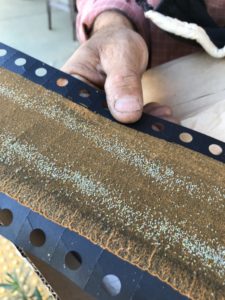
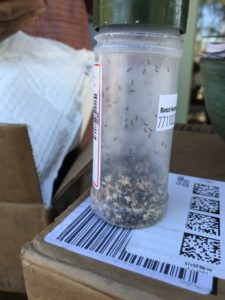
The lacewings come as eggs attached to cards. Each card has about 5,000 eggs and can be split into 30 small tabs. We hang the tabs in the fields, every 5 or so feet. Once they hatch, the larvae (called aphid lions) can eat 200-300 aphids over the course of 2-3 weeks before they become adults and move on to other food sources. Aphidius colemani is a parasitic wasp and it came in plastic containers which held a mixture of juvenile and adult wasps which we sprinkled over the fields of interest. Female wasps lays their eggs in aphids, the eggs hatch inside, and the larvae spin cocoons which swell the aphid’s body. The adult wasp then exits the aphid body, leaving behind a hard brown shell called an aphid mummy. For those who aren’t too squeamish, here’s a quick video showing the process (with slightly melodramatic narration).
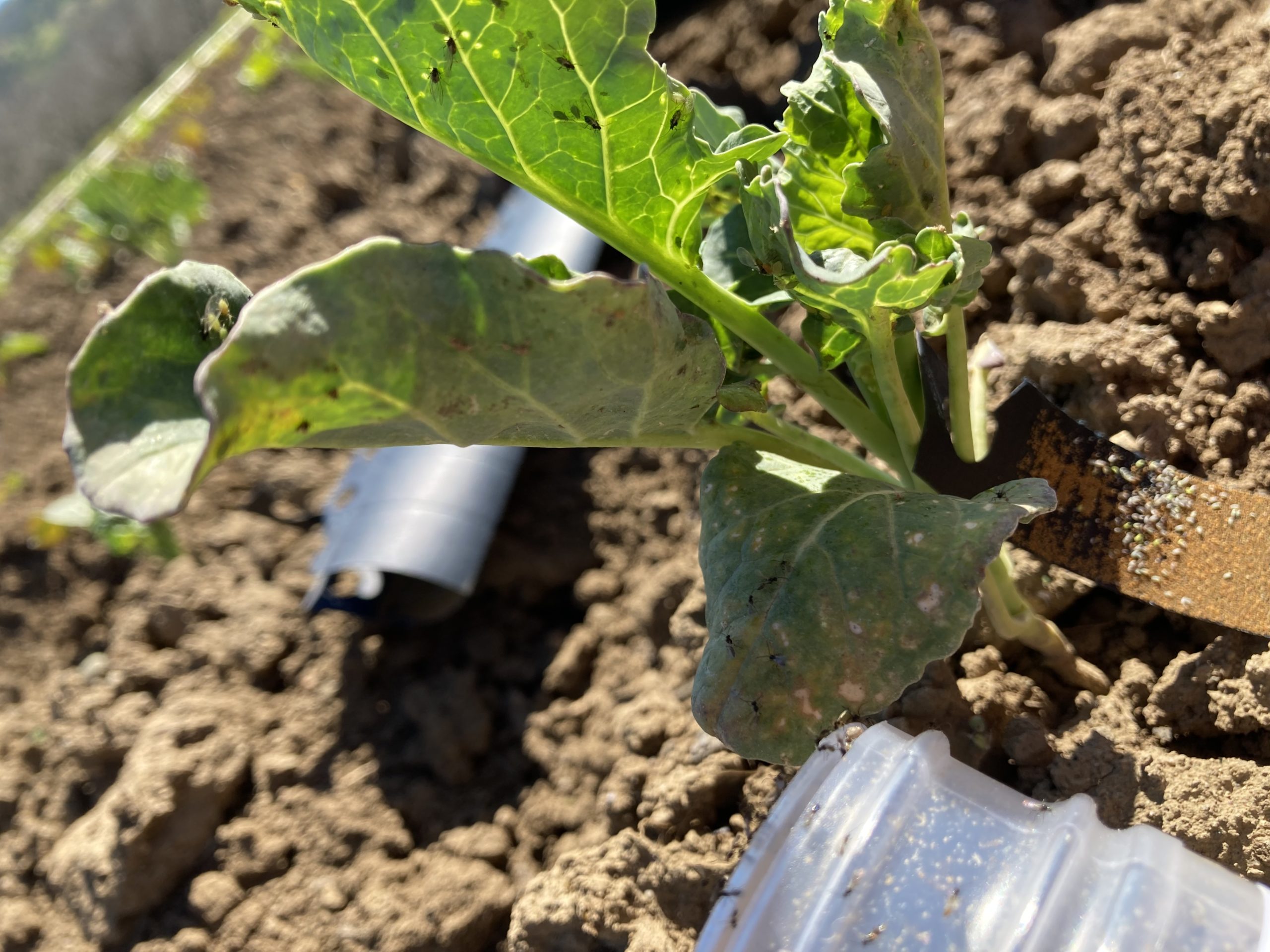
Maintaining health beneficial insect populations requires some work and forethought. For lacewings, the larvae eat aphids but adults feed on pollen, honeydew and plant nectar, so we make sure to include flowering plants in our hedgerows and a diversity of flowering crops on our farm to support them.
After doing our best to reduce aphid populations, we try to avoid harvesting crops with aphids. However, despite our best efforts, if you find some on your produce, don’t despair; they can be removed with a little effort. They don’t come off with a simple rinse in water because of how they adhere to the surface of the plants. Add a pinch of salt or a few drops of soap to some water and leave the greens, broccoli, or other produce in the water to soak for a few minutes. Then swish the produce around, drain, and rise. In some situations, you may also need to rub the areas where the aphids were to get them off.
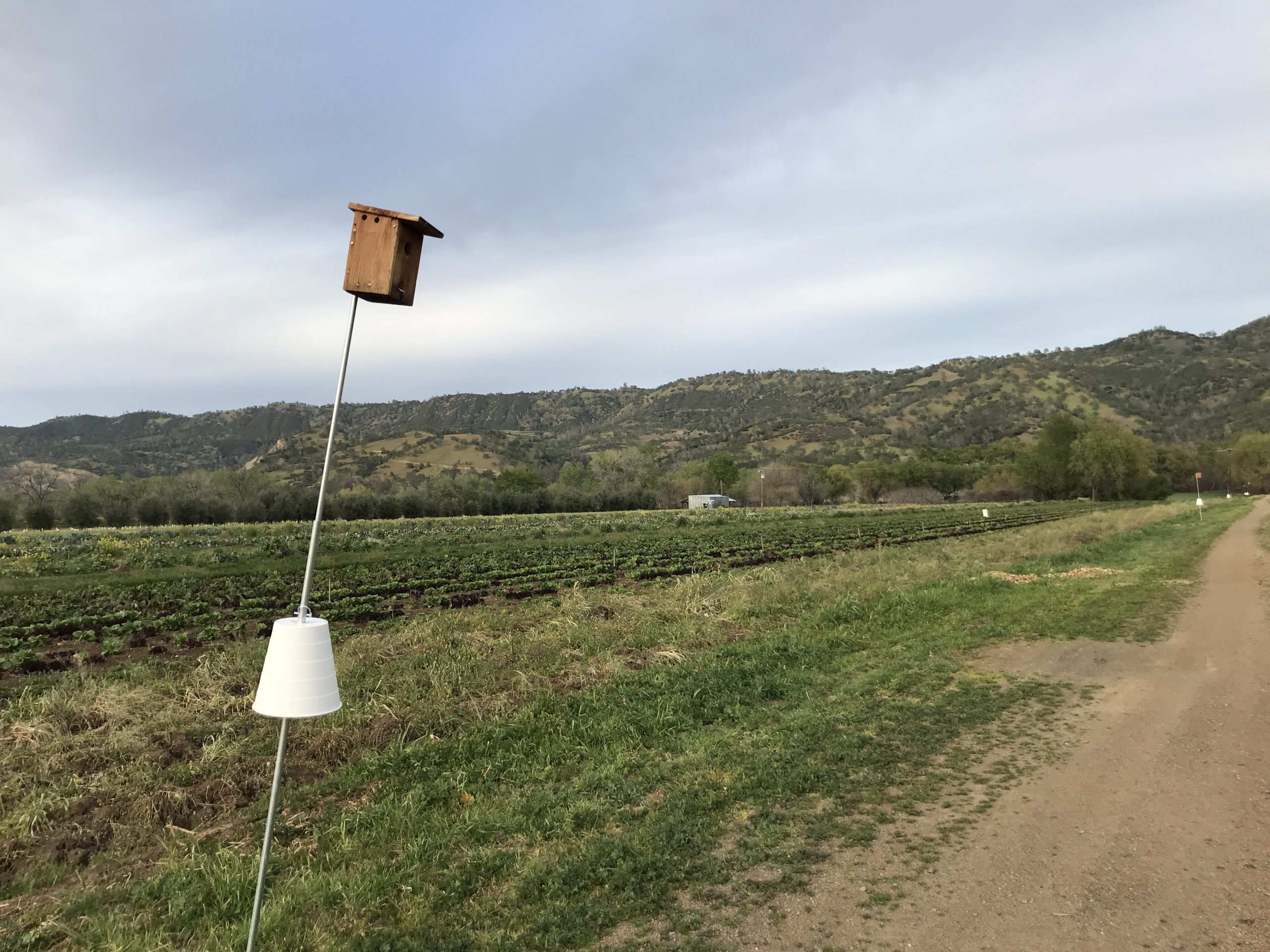
In a slightly different update about wildlife on the farm, this week a research team from UC Davis installed 40 bird boxes around the farm. They’ll be coming up once a week to take measurements that will inform their research looking at how to make agriculture more habitable to wildlife as temperatures increase due to climate change. We’re very curious to see how their research goes and will report back as they, and us, learn more. Supporting wild bird populations is important for bird populations and for farms (recently confirmed in some research by the same UC Davis lab that installed the bird boxes). Yet another reason that we’re very conscious and intentional about creating hedgerows and other habitat that’s friendly to birds and beneficial insects. Wildfarm Alliance is an excellent group doing research and advocacy about the importance of supporting wildlife – you can learn more about their work on their website (and see a video we made with them).
– Elaine Swiedler, CSA Manager
